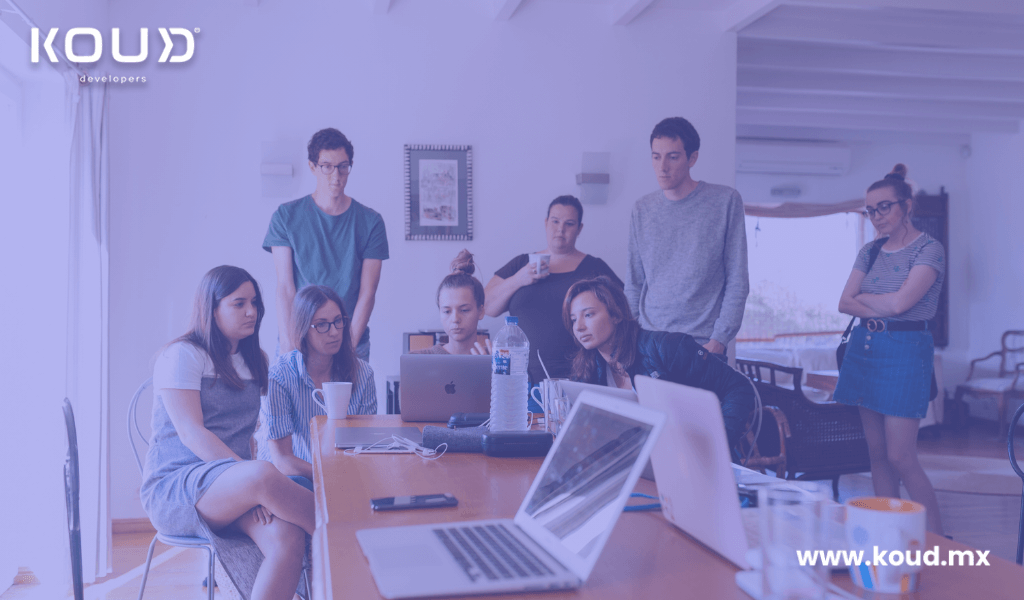The Impact of Generational Diversity in Development Teams
A New Challenge for Tech Teams
Today’s software development teams are composed of professionals from multiple generations: Baby Boomers, Generation X, Millennials, and the emerging Generation Z. Each generation brings unique skills, experiences, and perspectives, providing an extraordinary opportunity for innovation and growth.
However, this diversity also comes with challenges, such as differences in communication styles, work habits, and professional expectations. This article explores how to effectively manage generational diversity to harness its benefits and create strong, collaborative, and highly productive development teams.
What Is Generational Diversity and Why Does It Matter in Development Teams?
Generational diversity refers to the coexistence of employees from different age groups and backgrounds within the same workplace. In software development, this diversity is especially valuable:
- Baby Boomers (1946–1964): Bring extensive experience, long-term vision, and strong problem-solving skills.
- Generation X (1965–1980): Known for pragmatism, adaptability, and bridging the gap between older and younger generations.
- Millennials (1981–1996): Promote agile work practices, technological innovation, and a collaborative mindset.
- Generation Z (1997–2012): The true digital natives, offering fresh ideas and quick adoption of new tools and methodologies.
This combination allows teams to approach software development projects from multiple perspectives, enriching the creative process and improving outcomes.
Benefits of Generational Diversity in Development Teams
1. Greater Innovation and Creativity
Each generation brings a different way of solving problems:
- Baby Boomers and Generation X provide an analytical approach based on experience and established methodologies.
- Millennials and Generation Z introduce innovative ideas, agile methodologies, and cutting-edge technologies.
This collaboration creates an environment that fosters creative thinking and accelerates problem-solving.
2. Knowledge Transfer and Mentorship
Generational diversity promotes the exchange of knowledge across team members:
- Senior team members share deep technical knowledge, experience, and best practices.
- Younger professionals bring expertise in emerging technologies, agile frameworks like Scrum, and tools like DevOps.
This continuous transfer of knowledge builds stronger teams and ensures that valuable skills are passed on across generations.
3. Improved Adaptability
Multigenerational teams are often more adaptable to change:
- Experienced members bring stability, structure, and long-term focus.
- Younger generations excel in adapting quickly to change and driving digital transformation.
This adaptability is crucial in software development, where rapid changes in technologies and market demands require flexible, resilient teams.
4. Enhanced Productivity and Team Cohesion
When managed effectively, generational diversity increases productivity:
- The strengths of one generation complement the skills of another.
- Collaboration across generations creates a dynamic and balanced environment, where everyone contributes to achieving goals.
The result is a team that performs better, meets deadlines more efficiently, and delivers higher-quality products.
Challenges of Generational Diversity in Development Teams
While generational diversity has clear benefits, it also brings challenges that need to be addressed:
- Different Work Styles:
- Younger generations often prefer agile methodologies and flexible work environments.
- Older generations may prefer more structured and formal approaches.
- Communication Barriers:
- Digital tools (e.g., Slack, Teams) may be preferred by younger team members.
- Traditional communication methods (e.g., emails, face-to-face meetings) may be preferred by older colleagues.
- Generational Stereotypes:
- Misconceptions and stereotypes about each generation can create conflict and hinder teamwork.
- Divergent Expectations:
- Younger generations prioritize work-life balance and career growth.
- Older generations may emphasize job stability and long-term goals.
Strategies to Manage Generational Diversity in Development Teams
1. Promote Open and Respectful Communication
- Encourage team meetings where all members have equal opportunities to voice their ideas.
- Use tools like Slack or Microsoft Teams to bridge communication gaps between generations.
- Ensure all team members feel heard, respected, and valued.
2. Foster Cross-Generational Mentorship
- Traditional mentorship: Senior employees guide younger colleagues in developing technical and strategic skills.
- Reverse mentorship: Younger employees teach senior members about emerging technologies, tools, and agile practices.
Mentorship programs build trust, increase collaboration, and ensure that knowledge flows in both directions.
3. Offer Continuous Learning Opportunities
- Provide regular training programs to help team members stay updated on the latest technologies, trends, and tools.
- Create learning paths that cater to each generation’s strengths and professional goals.
4. Implement Flexible Work Policies
- Adopt flexible work hours and remote work options to accommodate diverse needs and preferences.
- Balance agile work methodologies with traditional workflows to cater to different work styles.
5. Break Down Stereotypes and Celebrate Diversity
- Organize workshops and awareness sessions to dispel generational stereotypes.
- Celebrate contributions from all age groups to highlight the value that each generation brings to the team.
Case Studies: Companies Leveraging Generational Diversity
- IBM: Successfully implemented cross-generational mentorship programs to bridge knowledge gaps and enhance collaboration.
- Microsoft: Promotes diversity through continuous learning opportunities and leadership development programs tailored for all generations.
- Google: Creates inclusive workspaces that embrace flexibility and encourage communication among multigenerational teams.
These examples demonstrate how companies can harness generational diversity to boost innovation, teamwork, and productivity.
Unlocking the Potential of Multigenerational Teams
Generational diversity in software development teams is a powerful asset for innovation, adaptability, and productivity. By fostering open communication, encouraging cross-generational mentorship, and offering continuous learning opportunities, companies can effectively manage age-diverse teams.
Rather than seeing generational differences as a challenge, organizations should embrace them as an opportunity to build dynamic, resilient, and innovative teams.
Through effective leadership, flexibility, and mutual respect, generational diversity becomes a strength that drives success in today’s rapidly evolving tech landscape.

